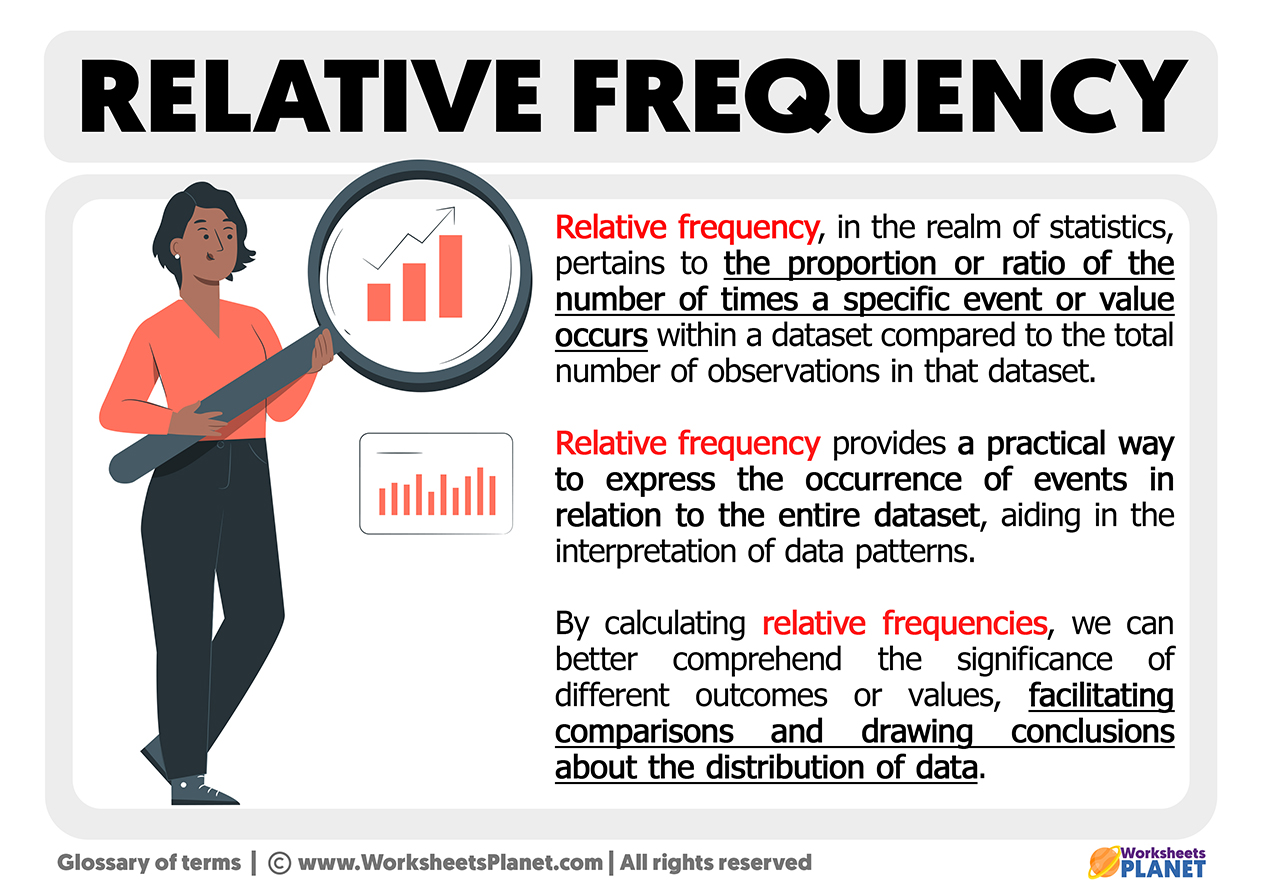Relative frequency, in the realm of statistics, pertains to the proportion or ratio of the number of times a specific event or value occurs within a dataset compared to the total number of observations in that dataset. Relative frequency provides a practical way to express the occurrence of events in relation to the entire dataset, aiding in the interpretation of data patterns.

By calculating relative frequencies, we can better comprehend the significance of different outcomes or values, facilitating comparisons and drawing conclusions about the distribution of data.

